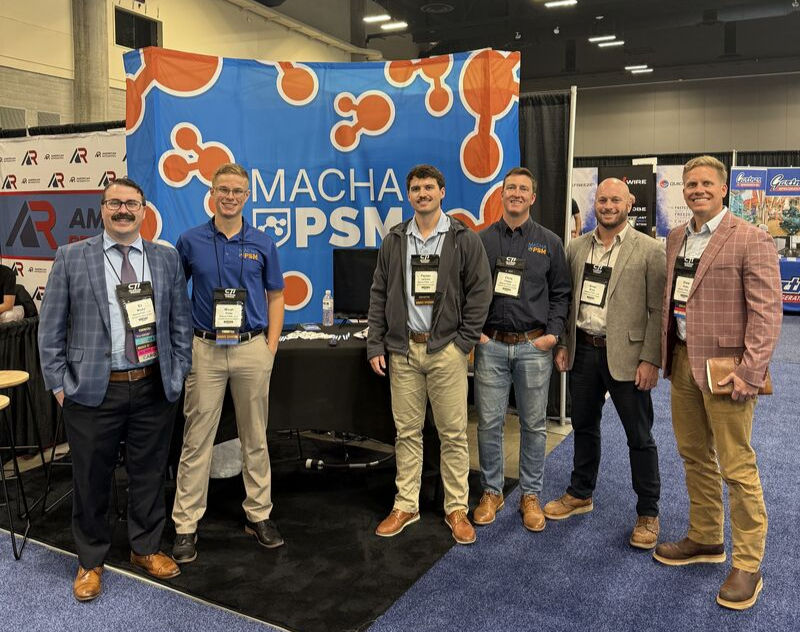Implementing LOTOTO Best Practices in Ammonia Systems | Blog No. 89
- Riley Masters, Process Safety Consultant

- Aug 26
- 3 min read

Lockout/Tagout/Tryout (LOTOTO) is a critical safety practice, especially in ammonia
refrigeration systems, to prevent accidental release of hazardous energy during
maintenance. Implementing LOTOTO effectively requires attention to detail, clear
procedures, and thorough training. Below are some best practices to follow to ensure the
safety of personnel working with ammonia systems.
1. Develop Clear Procedures
Tailor your LOTOTO procedures specifically for your ammonia refrigeration system, aligning
with OSHA’s guidelines under 29 CFR 1910.147. These procedures should include steps for
isolating ammonia flow at critical points, methods for depressurizing system components,
and procedures for safely venting residual ammonia. Clear and specific procedures help
reduce the risk of accidents and ensure that maintenance can proceed without incident.
2. Use Approved Devices
A Lockout/Tagout/Tryout (LOTOTO) tag should include the authorized worker's name or ID,
the reason for the lockout (e.g., maintenance or repair), and the date (and time, if
applicable) the lockout was applied. It should also display a warning, such as "Do Not
Operate" to ensure equipment remains off-limits and contact information for the person
who applied the lockout. Additionally, each tag should have a unique lock or tag number for
tracking. These elements ensure proper communication and safety during the lockout
process.
3. Train Your Team
Comprehensive training is essential for effective LOTOTO implementation. Training should
cover the recognition of energy sources specific to ammonia systems, an understanding of
The hazards associated with liquid and vapor ammonia, and the proper use of Personal
Protective Equipment (PPE), as outlined in 29 CFR 1910.132. By equipping workers with the
knowledge and skills needed, you ensure they are prepared to safely perform their duties
and understand the potential risks involved in working with ammonia.
4. Use Group Lock Boxes
For large-scale maintenance tasks involving multiple workers, group lock boxes (or satellite
boxes) are a useful tool. These devices allow several workers to secure their
locks on a single lockout point, ensuring that every team member verifies isolation before
beginning work. This practice promotes the "one lock per person" principle and reinforces
accountability, as outlined in OSHA’s standards.
5. One Lock, One Key
Each employee must be equipped with their lock and key. OSHA mandates this to
ensure accountability and safety—no lock can be removed without the employee’s explicit
action, preventing the accidental or premature re-energization of equipment. This practice
is fundamental for maintaining control over the lockout process and ensuring that no
worker is at risk from uncontrolled energy release.
6. Verify Isolation
Never assume that a system is properly isolated—always test and verify. This step involves
using ammonia detectors, pressure gauges, and visual inspections to confirm that the
The system is properly isolated. As required by OSHA, the verification of isolation and de-
energization must be done to ensure no residual energy remains in the system. This is an
essential part of maintaining worker safety and preventing accidents during maintenance.
7. Tryout
After verifying isolation, always perform a "tryout." This step involves attempting to operate
the equipment to confirm it cannot start or move. It’s crucial in verifying that all forms of
hazardous energy—such as electrical, mechanical, or pneumatic—have been fully
isolated. If the equipment operates, it indicates that isolation was not successful, and
additional isolation steps are required before proceeding. The tryout ensures that the
equipment is completely de-energized, preventing unexpected starts that could lead to
injury. You should never continue with the LOTOTO process until you have
"tryout" all the isolated equipment.
8. Communicate Clearly
Clear communication is key when implementing LOTOTO. Ensure all team members are
aware when LOTOTO is active and that they understand the risks involved with the isolated
equipment. Display clear signage around isolated equipment and communicate these
risks during team meetings or shift changes. Consistent and effective communication
ensures everyone involved is on the same page, reducing the likelihood of mistakes or
misunderstandings.
By adhering to these best practices, including the crucial tryout step, you can help ensure
that maintenance on ammonia systems is performed safely and in compliance with OSHA
regulations. Proper implementation of LOTOTO not only protects workers but also helps
maintain the integrity and functionality of the system, promoting a culture of safety and
accountability. At the end of the day, we all want to see our loved ones when we return
home, so let’s build a safety culture together.
Stay tuned for more!
Previous Post: What is a Blockflow Diagram? | Blog No. 88

For a comprehensive training on Anhydrous Ammonia, click here for our PSM Academy Ammonia Awareness training, to learn and earn a certificate of completion. Training is in English and Spanish. Use code SDS20 for a 20% discount on the entire purchase. For more information, email us at academy@machapsm.com.





Comments